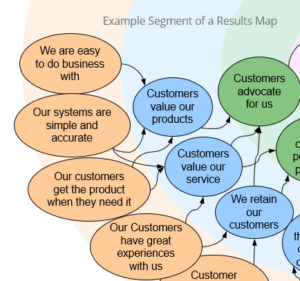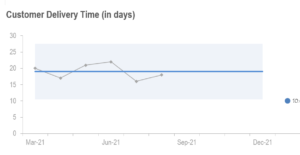How to make sure your goals are S.M.A.R.T.
The typical approach to setting SMART goals (or sometimes a definition for KPIs) is that the goal has to be: Specific, Measurable, Achievable, Realistic and Timely, or Timebound.
And that is the problem.
With this proven goal setting approach the T originally stood for TIMELINE, not timely or timebound.
To make sure your goals (or KPIs) are genuinely using this approach, you will need to break down the SMART acronym into deliberate steps to ensure you have a meaningful technique to guide you towards your goals.
Using the approach described below, your goals will be more purposeful, deliberate and motivate you to learn and achieve more.
Background to SMART Goals
SMART in its rudimentary form was developed General Electric (GE) during the last century, from around the 1940’s to the 1960’s. SMART was then improved upon during the 1970’s by two North American university psychologists, Edwin Locke and Gary Latham who were curious about motivation and goal setting theory.
Locke and Latham developed a set of studies and experiments to test how goal setting affected the motivation of people to work toward these goals. They used short term goals and longer period goals but found consistently that what motivated people to try and work towards that goal was the way the goal was written.
In 2006, Locke and Latham conducted a review of how SMART goal setting was working and proclaimed that, ‘some 400 studies show that specific goals lead to higher levels of task performance than easy, vague or abstract goals.’
How SMART Goals were used
Jack Welch was the CEO of GE from 1981 through to 2001. To say he was a legendary leader and manager might be an understatement.
Jack Welch used SMART with each of his managers, and it was used throughout GE.
Firstly, they agreed on what the specific needed to be. A future state outcome. Not something trivial. Sometimes there would be sub-specific goals, goals that would lead to the future state specific outcome. One example is that: I complete a 10km Marathon. With a sub-specific goal of, I can run 5kms without stopping.
Measurable. We need to be able to measure that we are making progress towards the specific goal. The ‘Complete a 10km Marathon’ and its sub-steps are measurable (either you can or can’t, and how are you making progress towards completing a 10km run).
Achievable and Realistic. That is the specific goal needs to be achievable and realistic. If I can’t jog for more than 1km now and the 10km marathon is in 4 weeks, it is probably not realistic or achievable. If I have six months to the marathon, then maybe it is achievable, if I commit to the goal and make the effort to slowly build my capability and progress towards that goal. Which is where the T in SMART comes in.
Timeline. That’s right, we don’t trivialise the T into timely or timebound putting a date on it and leaving it at that. We build a timeline, a plan about how we (with our current understanding of the goal), will work towards the goal.
The key in the success of this goal setting approach is the detail that goes into it.
SMART goals are not vague or trivial.
SMART goals are meaningful, clear and have a supporting plan on how to make progress towards that goal.
If our plan is not making progress towards our goal, then we will know that by checking our progressive measures. Then we revisit the timeline and plan, and adjust accordingly. This is often referred to as continuous improvement and has to be informed by evidence, the performance measures.
The formula for your SMART goals today
Let’s look at an example, of how this might be applied for your goals.
We can use key steps in the PuMP® (Performance Measurement Process) to help us get clear about our SMART goals. (this article will give you an overview of the PuMP® method)
Specific.
Step 2 of PuMP® gets us to focus on our Results or Outcomes, what we are working towards. This Results or Outcomes language is exactly what we need for SMART goals.
Additionally, Step 2 of PuMP® uses a Results Map (cause-and-effect) which also helps us understand the sub-specific Results or Outcomes we need to work on to move us forward.
Using the PuMP® Results Mapping technique we can develop a set of cause-and-effect Results (or outcomes). Such as this one (let’s say for a B2B supplies company):

We want to improve the Result of our “Customers value our service” and the part of this that we want to focus on is our ordering and delivery process. So, we move to the cause-and-effect Result of “Our customers get the product when they need it”.
This is our Specific goal, “Our customers get the product when they need it”. I can hear you thinking, “but ‘when they need it’ might be vague…”. Maybe. However, two things, (1) our customers perception of ‘when they need it’ is a driver for how they perceive value, and (2) our performance measures for this Result will help us get quantifiable feedback.
Specific and Measurable
So, the Result combined with the measures gives us:
- The Result: “Our customers get the product when they need it”.
- Measured by (two measures):
- Customer Delivery Time: Average time in days from customer order to receiving their order on site, per month
- Customer Confidence in Delivery Time: Average score on a scale 0-10, to the survey question: I have confidence I will get my order when I need it, average of all customers surveyed each month
These two measures would have been designed and selected using the PuMP Measure Design Technique.
Additionally, we often need more than one measure to give us the feedback we need for each Result.
Achievable and Realistic
This is where we can start to consider targets that would be attached to the performance measures.
To establish an achievable and realistic target we would surely need to know the current level of performance. If we do not know how we are performing now, any target would just be a guess.
To establish a baseline of performance we need five measure values. We will use the Customer Delivery Time from above.

This measure graph is showing us the average customer delivery time in days for each month from March to August 2021.
Also shows us that the average delivery time in days is 19, illustrated by the blue central line – this is a mean or average of the first 5 measure values.
Let’s look again at the current level of performance 19 days on average to get the order to the customer. So now about the achievable and realistic target…? Is 2days, achievable and realistic, probably not, that would take a massive change to the current level of performance. What about 5 days…?
The target selected is 10 days by Jan 2022, shown by the blue dot to the right of the chart (that means change the level of performance from 19 days on average to 10). This gives the team four-to-five months to change performance, perhaps still ambitious…
Having the target on the chart alongside the current level of performance allows us to visually see the change that has to occur.
This approach is drawn from Step 6 of PuMP. And facilitates the way to developing more achievable and realistic targets.
Timeline
Now we have:
- our Specific Result/Outcome,
- supported by measures designed and selected for the result,
- knowing our current level of performance, we can set a target, that is hopefully realistic and achievable,
- now all we need to do is create a timeline – a plan for how we will get to that new target state.
And I will leave the development of the plan and timeline to you.
But consider if you came up with four or five potential solutions to the problem of changing the current level of performance, do you need to implement all five…? Why not select one or two that you feel will have the biggest impact, implement those and assess the impact of these solutions on the performance measures. Then with that new knowledge, determine what the next step is…
Smartening Up
Using an approach like this will do a few positive things for you and your goal setting.
Firstly, it will make you goals more purposeful. Working towards that outcome has a lot more meaning than ticking the box that you completed an activity on time and on budget.
Secondly, it will make you goals more deliberate. To me this means that we have to prioritise. Initially the result or the outcome, then the order of the steps in the timeline. This clarity brings more commitment to working on the steps in the timeline.
Thirdly, and following on from these first two points, you will feel like you are achieving more, making more progress. And with that added motivation, we do more, we learn more and leverage that human cycle of plan, do, check (measure), learn and act to replan with this new knowledge.
Let’s ditch the trivial goals setting approaches that such the energy out of our work. Instead, let’s be clear about the outcomes we want to make an impact on and learn how to make that impact in the world.
Featured Image by Markus Winkler on Unsplash
References
Charles Duhigg, Smarter, Faster, Better (2016) Random House, USA
E.A. Locke and G.P. Latham, (2002), Building a Practically Useful Theory of Goal Setting and Task Motivation, American Psychologist, September, pages 705-717
E.A. Locke and G.P. Latham, (2006), New Directions in Goal-Setting Theory, Current Directions in Psychological Science 15, pages 265-268
G.P. Latham and E.A. Locke, (1991), Self-regulation Through Goal Setting, Organizational Behaviour and Human Decision Processes, 50, pages 212-247
Claudio Fernández-Aráoz (2020), Jack Welch’s Approach to Leadership, Harvard Business Review, March 3. https://hbr.org/2020/03/jack-welchs-approach-to-leadership



